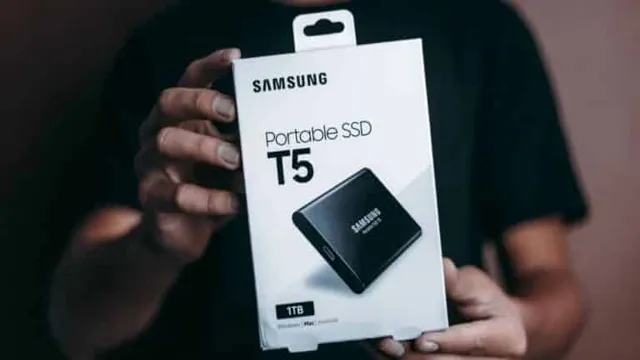Are you tired of having to replace your SSD every year or two? SSDs are known for their fast read/write speeds, but their lifespan is often a concern for users. The good news is that maximizing the lifespan of your SSD is possible with a few simple steps. In this blog post, we’ll go over some tips and tricks for prolonging the life of your SSD and getting the most out of your investment.
Think of it like taking care of a car – regular maintenance and care will make it last longer and run better. So, let’s dive into how you can extend your SSD’s lifespan and get the most out of your computer’s storage.
SSD Health
If you’re wondering how full you should allow your SSD to get, the answer is that it depends on the type of SSD you have. Most modern SSDs are pretty resilient and can handle being nearly full, but it’s still a good idea to leave some space available. Experts recommend using no more than 75% of an SSD’s total capacity to ensure it stays healthy and performing consistently.
This allows the SSD to carry out maintenance tasks and wear-leveling operations without slowing down. Plus, if you fill your SSD to the brim, you might not have enough space left for important system files and updates, which could cause issues down the line. In short, while you can use most SSDs almost to their max capacity, leaving some space available is best practice and will keep your SSD healthy and running smoothly.
Understanding SSD Endurance
SSD health SSD endurance is a term that is often used to refer to the lifespan of an SSD or how long it lasts before it fails. It’s one of the most critical factors to consider when purchasing an SSD. SSD endurance is calculated by the total amount of data that can be written to an SSD before it starts to show signs of failure.
An SSD with high endurance can last for several years without any issues, while an SSD with poor endurance may fail within a few months. To ensure high SSD health, manufacturers often publish the endurance rating of their SSDs. It’s worth noting that excessive usage, such as running intensive programs or transferring large files, can reduce an SSD’s lifespan.
As such, it’s essential to monitor the SSD health regularly to ensure it remains in good condition. By doing so, you can avoid unexpected data loss and maximise the lifespan of your SSD.

Impact of Drive Capacity
SSD Health The capacity of your SSD drive can have a significant impact on its overall health. As the drive starts to fill up with data, its performance may begin to suffer. This is because SSDs rely on empty blocks of memory to write data quickly.
When the drive is nearly full, it takes longer to find empty blocks, resulting in slower write speeds. Furthermore, as the available space on the drive decreases, the chances of data fragmentation increase. This can lead to reduced performance and a higher risk of data loss.
It’s essential to keep your SSD’s capacity below 80% to ensure optimal performance and longevity. If you need more space, it’s better to upgrade to a larger drive rather than try to squeeze more data onto an overfilled drive. By doing so, you’ll not only improve the health of your SSD but also benefit from faster performance and decreased risk of data loss.
Optimal SSD Usage
If you’re wondering how full you should allow your SSD to get, the answer is that it depends on the size of your drive, the amount of available space, and your needs. SSDs tend to slow down once they start getting full, so it’s best to keep a little breathing room. A good rule of thumb is to try to keep your SSD no more than 75% full.
This means that if you have a 256GB SSD, you should avoid filling it up beyond 192GB. This will ensure that your computer runs smoothly and that your SSD lasts longer. Additionally, if you frequently transfer large files or install and uninstall programs, you may want to aim for an even lower capacity on your SSD, as it will help prevent data fragmentation and improve overall performance.
Ultimately, it’s important to strike a balance between having enough space to store your files and keeping your SSD functioning optimally.
Avoiding Overuse
Optimizing the usage of your SSD is integral to its longevity and performance. Overusing an SSD can lead to decreased performance and a shorter lifespan. It’s important to consider how often and how intensely you’re using your SSD, and to take steps to avoid overuse.
To optimize your SSD usage, it’s important to reduce write operations by minimizing unnecessary file transfers, disabling indexing and defragmentation, and being mindful of how many programs are running simultaneously. By taking these steps, you can ensure that your SSD is being used optimally, and can extend its lifespan while maintaining peak performance. Don’t forget to regularly check your SSD’s health and make sure it’s running at its best.
With a little effort, you can ensure that your SSD will serve you well for years to come.
Managing Storage Space
When it comes to managing storage space, using an SSD can greatly improve your computer’s performance and speed. However, it’s important to optimize its usage to ensure the longevity and efficiency of your SSD. One way to do this is to avoid filling up your SSD to maximum capacity.
Instead, try to keep at least 10-20% of the drive space available for better performance. Additionally, avoid using your SSD for long-term storage of large files, such as movies or photos, as this can wear out the drive faster. Instead, use an external hard drive or cloud storage for these types of files.
Regularly deleting and archiving unused files can also help free up space and improve overall SSD performance. By managing your SSD usage in these ways, you can ensure your computer runs smoothly and effectively for years to come.
When to Upgrade
Upgrading to an SSD can noticeably enhance the performance of your computer or laptop. However, deciding when to upgrade depends on how intensively you use your device. Optimal usage of an SSD can be achieved if you prioritize installing the operating system onto the drive since it can significantly reduce boot and load times.
Consider upgrading if your computer is slow while performing routine tasks or if you notice significant lag while opening programs and files. SSDs have a limited lifespan, and regularly checking the amount of available space and monitoring the wear and tear can help prevent potential issues. Upgrading to an SSD can give your laptop or computer a new lease of life, and you will be amazed at the increased speed and performance it offers.
Tips for SSD Maintenance
“How full should I allow my SSD to get?” is a common question among laptop and desktop users who want to keep their solid-state drives (SSDs) in prime condition. It’s important to note that SSDs tend to wear out over time, and the more you use them, the more likely they are to fail. One key factor that affects the lifespan of SSDs is how full they are.
Experts suggest that you should avoid filling your SSD to its maximum capacity. Instead, you should aim to keep your SSD at least 10-20% free so that it has space for file swapping and temporary files. This helps to avoid overworking the SSD and allows it to function optimally, keeping it in excellent condition for as long as possible.
Additionally, regular maintenance such as running disk cleanup, uninstalling rare-used programs, and optimizing your operating system can help keep your SSD in tip-top shape. Remember, prevention is key when it comes to SSD maintenance.
Regular Backups
Regular backups are essential to maintaining the health and longevity of your SSD. Regular backups ensure that even if your SSD suddenly crashes or fails, you won’t lose any of your important data. This is especially important if you are using your SSD for work-related tasks, as losing important information can have dire consequences.
There are a few different ways to back up data on an SSD, including using cloud storage solutions like Google Drive or Dropbox, or using an external hard drive. It’s important to regularly test your backups to make sure they’re running correctly and that your data is being securely stored. By implementing regular backups into your SSD maintenance routine, you can ensure that your data stays safe and secure at all times.
Trim Support and Firmware Updates
If you’re using a solid-state drive (SSD), it’s important to know about trim support and firmware updates. Trim support is a feature that helps maintain the performance of your SSD by clearing out the data that’s no longer needed. Without trim support, your SSD can become slower over time.
You can enable trim support on most operating systems, including Windows 10 and macOS. Firmware updates are also important for SSD maintenance, as they can fix bugs and improve performance. Be sure to check your SSD manufacturer’s website regularly for firmware updates.
Don’t wait until you notice performance issues to take action – keeping your SSD updated and properly maintained can help ensure its longevity and keep it running smoothly for years to come.
Avoiding Extreme Temperatures and Physical Damage
When it comes to keeping your SSD in top condition, it’s important to avoid extreme temperatures and physical damage. This means keeping your device away from hot areas and ensuring it doesn’t get jostled or knocked around. Extreme temperatures can cause your SSD to degrade faster, which can limit its lifespan and reduce its performance.
Similarly, physical damage can cause your device to malfunction, which can lead to data loss or other issues. To keep your SSD in tip-top shape, consider investing in a protective case or cover to shield it from potential damage. And be sure to keep it in a cool, dry area to avoid any overheating issues.
With the right maintenance and care, your SSD can stay running optimally for years to come.
Conclusion
In the world of SSDs, it’s like Goldilocks and the Three Bears: you don’t want it too empty, you don’t want it too full, you want it just right. So, do yourself a favor and keep your SSD at the sweet spot of around 75% full. This way, you’ll have plenty of space for all your files and programs, without sacrificing speed and performance.
Just remember, a happy SSD is a happy computer, and a happy computer means a happy you!”
FAQs
What is the recommended maximum capacity utilization for an SSD?
It is recommended to keep your SSD at less than 75% capacity utilization to ensure smooth and optimal performance.
Can filling up an SSD completely cause any damage?
While most modern SSDs are designed to handle a full capacity, it is still not advisable to fill up an SSD completely as it may affect its lifespan and performance.
Will keeping some free space on my SSD improve its speed?
Yes, keeping around 20% of free space on your SSD can help improve its performance and prevent it from getting bogged down.
Should I defragment my SSD to free up space?
No, SSDs should not be defragmented as they work differently than traditional hard drives and it can actually cause harm to the drive. Instead, focus on removing old or unnecessary files to free up space.
